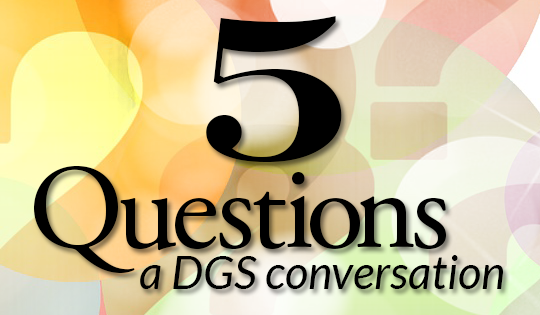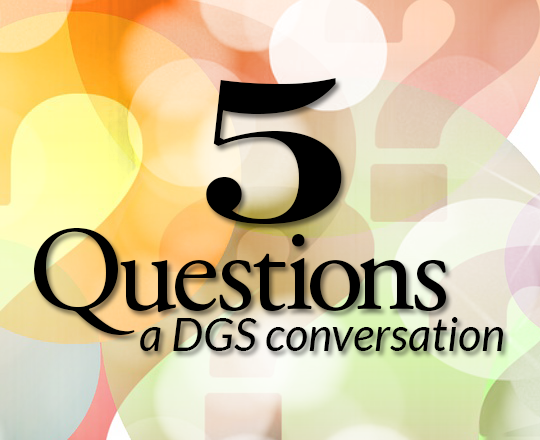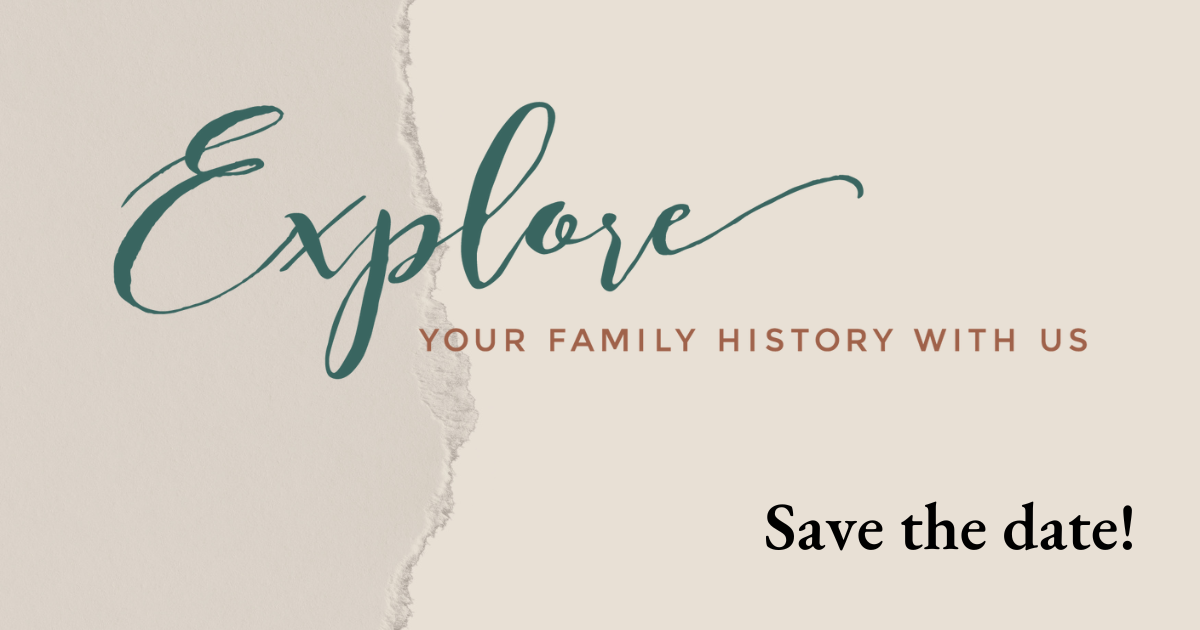5 Questions: DGS members chat about DNA-based genealogy


This is the first installment of our “5 Questions” feature – conversations with members of the Dallas Genealogical Society on topics related to genealogy, research practices, discoveries, experiences, and the Society itself. If you’d like to participate in a future conversation, let us know.
Each participant was given the five questions and responded with five answers. Their answers represent their own views, and not the views of the Dallas Genealogical Society or the Dallas Public Library. The conversation has been lightly edited for length.
The participants
- Susan Rainwater is the current DGS Director of Finance and member of the Website and Newsletter subcommittees. She is strictly a documents-based genealogist.
- Barbara Ware is a former DGS Director of Information Technology, and a current member of the Newsletter subcommittee. She uses tools that apply to her research, but leans toward traditional genealogical methods using all types of media.
- Patti Huff Smith is the current DGS Vice President and General Meeting Administrator, and is leading the society’s marketing efforts. She uses traditional genealogy research emphasizing genetic DNA analysis.
- Mic Barnette is one of the leaders of the DNA SIG, and a member of the Dallas Public Library’s 8th Floor staff. He uses both traditional methods and DNA in his research.
Question 1
Rainwater: I know I can get DNA tests through 23andMe, Ancestry.com, FamilyTreeDNA, and MyHeritage. Why would I choose one over the others?
Ware: What genealogical question are you trying to answer? If you want to trace a direct paternal line (Y-chromosome), choose FamilyTreeDNA, because they are the only company offering Y-DNA tests. If you are interested in finding the most autosomal matches, i.e. “cousin bait,” you should choose Ancestry.com or FamilyTreeDNA. To search for European and Middle Eastern matches, you may want to try MyHeritage. 23andMe is known for its health information, but many of the people you match may choose not share their results because they were using it just for health data.
Smith: Are you expecting any surprises? Be prepared for the unexpected before you take your DNA test! But first ask: “What am I hoping to learn from my DNA results?” The answer will guide you to which test best fits your desired outcome.
There are three types of DNA tests: autosomal, mitochondria (mtDNA), and Y-DNA. An autosomal test is right for you if you are interested in finding more DNA relatives. Ancestry.com would be my first choice because it has the largest database of testers, and you can see your DNA matches’ family trees, if the tester has made their tree public.
Autosomal DNA and ethnicity results can be done with Ancestry.com, MyHeritage, or 23andMe.
If you want to find your birth family, start with an autosomal test, then consider a Y-DNA test if you are male, searching for your paternal side of the family, or a mtDNA test if you are searching for your maternal side of the family.
Barnette: I’d like to add one service that hasn’t been mentioned here: LivingDNA.com.
LivingDNA.com is a newcomer to the genetic genealogy field. With a meager 300,000 testers, its forte is as a regional testing company. They are based in England and tout their ability to match testers with the parish in the British Isles where their ancestry predominates. Of late they are beginning to branch out to showing where in Europe and Scandinavia the ancestry of the testers originate.
Also notable is FamilyTreeDNA. Currently it’s the smallest of the four major testing companies, with only 1.2 million testers, but they were the first company to test individuals for genetic genealogy. I think they are the most responsible for innovating and promoting genetic genealogy.
Question 2
Rainwater: Is there any reason to get multiple tests?
Barnette: Knowing where the next big “breakthrough” genetic cousin is lurking is like playing the lottery.. If you test with, or upload to, as many companies as you can afford, the odds are in your favor for finding them.
On the other hand, if you are asking if one should take one or both a Y-DNA or Mt-DNA test my answer is most emphatically no.
Autosomal tests can only show results back 5 to 6 generations at most. Y-DNA and Mt-DNA tests can show the way backwards in time for generations, but are used for very specific goals.
Smith: Multiple tests can be beneficial, but only if you have an unlimited budget.
Ware: You get multiple matches because not everyone tests in all databases. For example, a collateral line family member (not genetically related to me) found that his mother’s family tested with FamilyTreeDNA and his father’s family members tested with Ancestry.com. He would not have found genetic information on both lines without taking both tests and following up with “paper” research.
Question 3
Rainwater: After I get my DNA test results, what should my next step be?
Ware: Look at the matches. Build out your tree on the testing company’s website. On that tree, start with you. Don’t make separate trees for your mother and father. For example, I have a match with a fairly close cousin from my paternal side and a distant match with the same individual on my maternal line. I would not have seen the connection without DNA.
Smith: After you receive your DNA test results, the next step to consider is whether to download your DNA data from your testing site and upload it to GEDmatch.com. There is much to learn from your DNA data, and this step will give you additional DNA matches you may not have otherwise known, as well as unique features such as “One-to-one” DNA comparison, chromosome, visualization options, multiple kit analysis, chromosome browsers, matching segments, and more! [Editor’s note: you can also upload to one or more of the other testing companies already mentioned and get some of these same tools.]
Barnette: There are two parts to successful genetic testing – the test and your tree. Once you submit your DNA test, you should also create a family tree in the associated website. Add your DNA to all the larger genetic genealogy databases. Each company has different genetic diagnostic tools. Learn how to use those tools.
Question 4
Rainwater: I see lots of folks claiming that “DNA proves” some pet theory of their ancestry. How much stock should I put in these claims?
Smith: Beware of confirmation bias! This bias can be a common “disease” often developed by eager genealogists to fit their belief of family lore without objectively examining the evidence. Abandoning our prejudice allows a fresh look at each piece of documentation. Always prove your theory with the best possible genealogy research! We can do genealogy research without DNA, but we cannot do DNA without following solid genealogy standards.
Ware: It depends on the “pet theory.” DNA can provide suggestions about where you should go in your traditional genealogical research or the individuals you should reach out to.
Barnette: Large databases have the advantage of lots of tester trees, but those databases usually work on an algorithm. The more people say a relationship is correct the more likely the algorithm will agree – even when it is incorrect.
In my own research and online accounts, I have several examples of first or second wives or husbands who are claimed by others to be correct when it actually is the other. I have a difficult time trying to get the algorithm on my own tree to reflect the correct ancestor.
Question 5
Rainwater: Are you at all concerned about how your DNA results will be used if you share them? I’m thinking about use by law enforcement, but also by insurance companies and employers.
Ware: I am not concerned for myself, but I do have the law enforcement option turned off for my family members. Each testing company has policies regarding law enforcement options. Read the policies carefully to see if you agree with sharing. I would not want my DNA shared with insurance companies or employers.
Smith: No, I have absolutely NO concern about my DNA being made public.
Barnette: I am most worried about insurance companies and employers! As for law enforcement, much less so. As far as law enforcement using DNA in felony criminal cases such as murder and rape, I am for it as long as the person taking the DNA test has given permission for this use. If my DNA helped identify an unidentified person that would really give me great satisfaction.
Editor’s note: The Genetic Information Nondiscrimination Act (GINA) of 2008 currently prohibits discrimination in both employment and health coverage based on an individual’s genetic profile, but the law may not cover life insurance, long-term care, or disability insurance.
For more information, see the HHS.gov article, Genetic Information.

